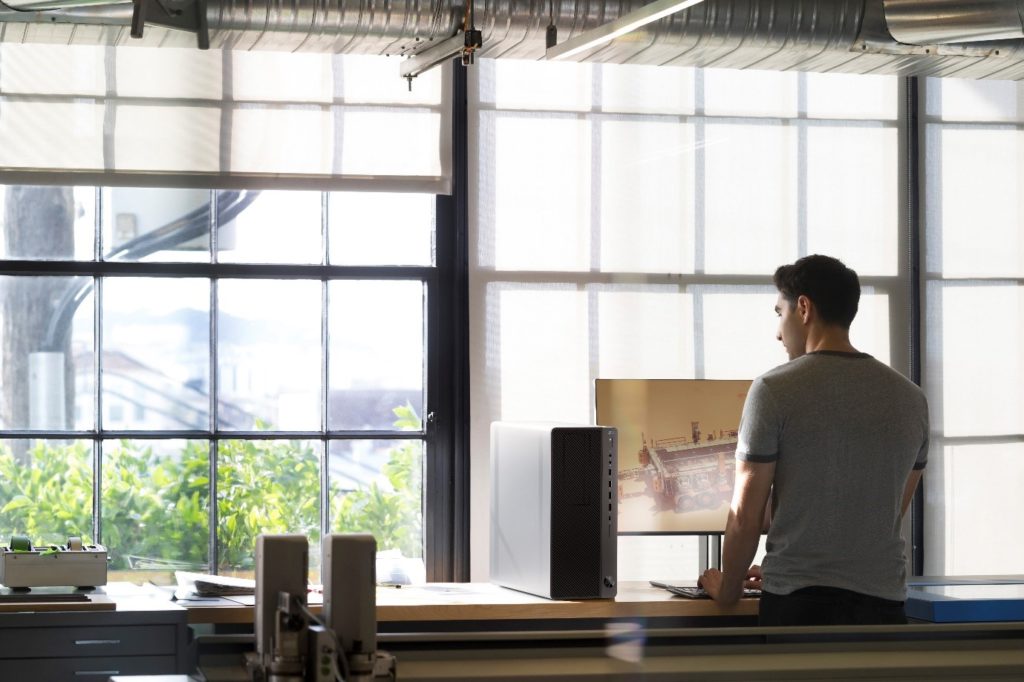3 factors changing the workplace landscape
Courtesy of widespread digital disruption, the workplace is currently in a state of flux. We’ve evaluated the 3 key factors facilitating this change for you to explore.

The Workplace is Changing
The year 2019 presents a significantly different world of technology than existed 5 or 10 years ago. Business transformation and digital transformation are well underway, causing a massive re-think about the role of IT inside the business. We can no longer dedicate expensive IT resources to tasks that don’t directly benefit the business. Instead, we are outsourcing many IT tasks to 3rd-party providers who bring specialised skills and economies of scale to people-intensive, often largely administrative and repetitive functions.
Starting around 2015, the 4 pillars of the 3rd Platform of computing – cloud, big data, social, and mobile – began to be more integrated. As they matured, the silos between them began to break down and there was an acceleration in the ability to deploy these pillars for greater business benefit. It became much easier to share data across the business, and therefore more data could be analysed and eventually monetised.
Concurrently, we began to see shifts in the makeup of the workforce. IDC estimates that, by 2020, millennials will account for 50% of workers. Millennials are highly educated, tech-savvy, achievement-oriented, team-oriented, and prone to job-hopping, always looking for something new and more interesting. They also expect to use the latest technology and demand workplace flexibility. The confluence of the 3rd Platform, the digital transformation we’re currently engaged in, and the makeup of the workforce has already caused us to confront some very interesting challenges in 3 major areas.
Mobility
Mobile is the key to working flexibly. The Deloitte Millennial Survey from 2017 flexible working employees are twice as likely to say it has a positive impact on their performance and well-being. Offices are becoming co-working spaces for a core of employees. More employees are working remotely. Additionally, Accenture states that by 2020, 43% of the workforce will be freelance. Even employees who spend a significant amount of time in the office will be free to work from wherever they feel most productive, or from wherever it might be more convenient in terms of achieving a work-life balance (which is also important to millennials).
This rush to remote working, enabled by mobility, raises a number of challenges.
- Remote working implies portable devices which requires connectivity from unpredictable locations, so secure networking is a major requirement.
- Network connected devices will require a certain quality of service such that productivity is not impacted by the location of the worker.
- It will be necessary for remote workers to be able to access not only the organisation’s applications and data, but also be able to collaborate and communicate with peers and team members.
- Workers will express a strong preference for which technologies they use, so Bring-Your-Own-Device, or preferably Choose-Your-Own-Device for improved security reasons, will be important.
- With workers now typically using an average of 3 work devices each, lifecycle management of all devices, whether in-office or remote, will become a greater burden to organisations and an imposition on IT bandwidth and resources. Contracting with a vendor for a device-as-a-service managed service will be strategic. The service could also manage licensing and compliance for Office 365 or other tools.
Collaboration
The necessity of using online collaboration tools is somewhat independent of remote working. Work has already evolved to the point where online collaboration is key to productivity and effectiveness even when team members are in the same space. As remote working explodes in popularity, the need for online collaboration platforms increases. Is there still value in face-to-face meetings? Of course, but these meetings can be conducted online via video-conferencing using tools such as Microsoft Teams or Skype for Business.
It will be essential for collaboration that document authoring, editing, and sharing will be managed by a single platform. As with mobility, there are security issues here too. With a workplace mix that includes permanent employees both office-based and remote, freelancers, and contractors, not all workers should have access to all documents and data. Username and password, voice, fingerprint and facial recognition will be used to provide access only to what they need.
Security
Cyberattacks are escalating to the point that there will be those that have been attacked, and those that don’t know they’ve been attacked. A geographically-dispersed population of workers, using many different device types, and logging in from unpredictable locations, are a perfect storm of opportunity for hackers. Workers will inevitably use non-secure networks.
Solutions will include robust management of devices – including security – by a device-as-a-service provider, ensuring that all content on the devices is controlled. Moving applications and data into the cloud with access granted depending on the sensitivity of the data and the identification of the user is another piece. Each connection attempt to the corporate network must be assessed to see if it meets the security requirements. As firewalled perimeters become less enforceable, cybersecurity will need to be device-based, and will require built-in security solutions to protect the corporate network.
Conclusion
There are many vendors claiming solutions to these problems. However, Ricoh’s Technology-as-a-Service option can deliver them all.
From our perspective, HPE’s Aruba provides a single architecture for high-capacity wireless and wired networks, and a comprehensive policy management and segmentation of connected devices, users and services.
Microsoft provides a strong portfolio that supports the requirements for collaboration – document creation, editing, version control, document sharing, chat, video-conferencing, and file storage.
Please contact us for information about TaaS.
